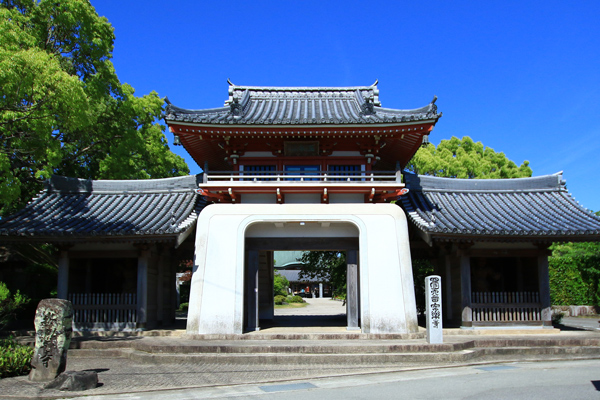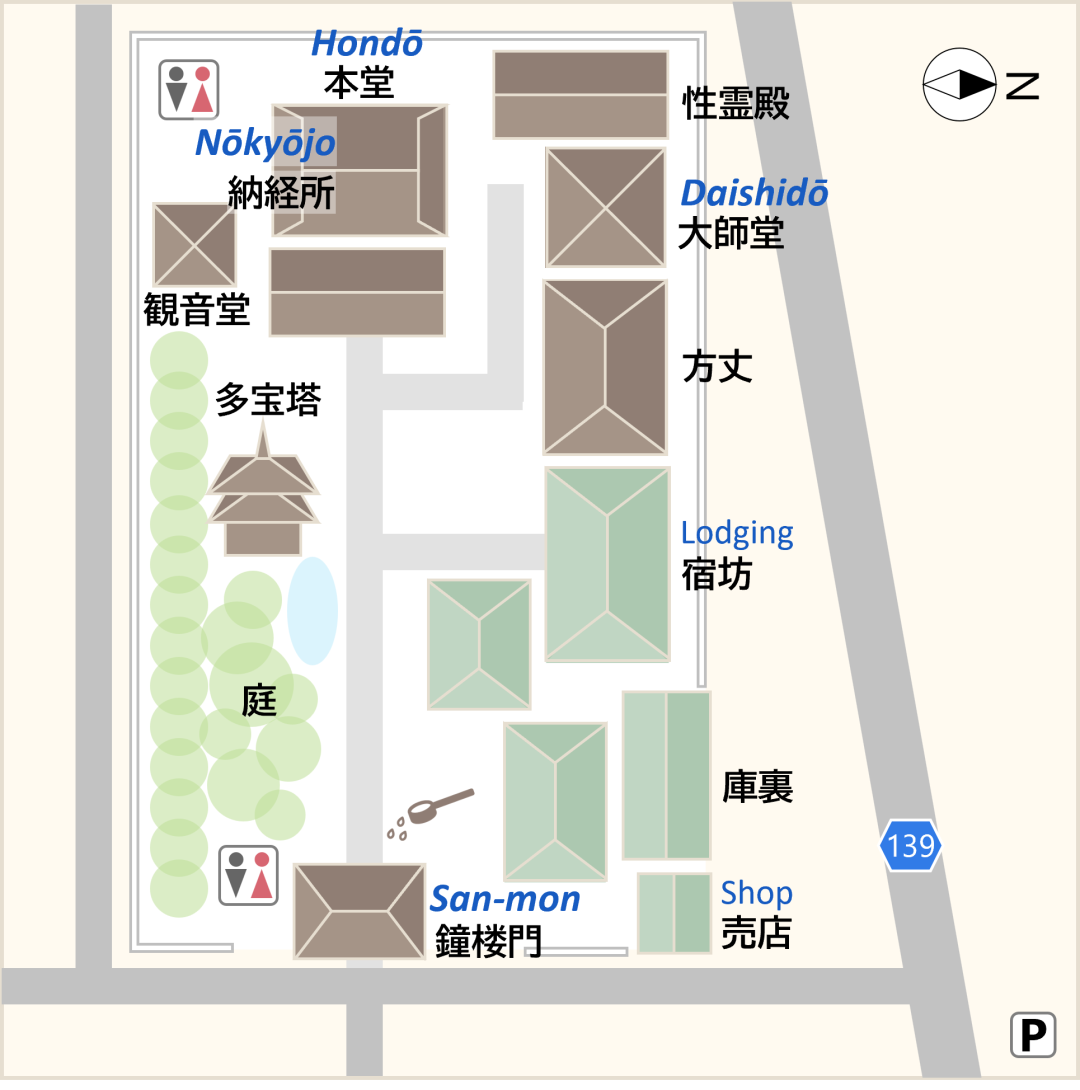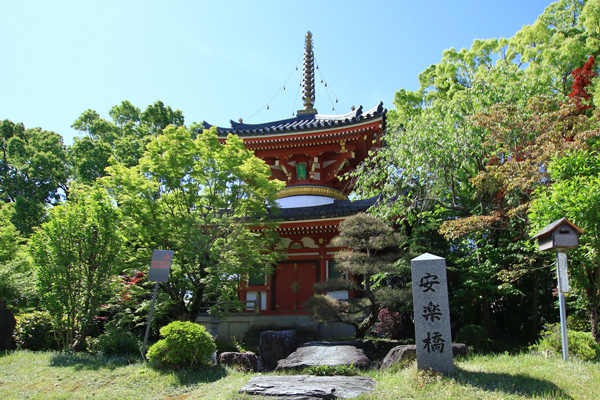The Shikoku Pilgrimage Temple Guide
Temple 6, Anrakuji

Precinct map

History of the temple
In the Shikoku Henro Reijoki (Shikoku Pilgrimage, 1689), it says, “The temple has prospered because of the divine influence of sulfur and the bells never cease to ring...” In the past, the temple was moved from the foot of the Asan mountains to the present location. The temple has passed through periods of upheaval, including fires during the wars of the Sengoku period (1576-1586) and the edicts ordering the separation of Shinto and Buddhism issued by the Meiji government in 1868.
The temple is in Hikino Village, where there are hot springs. Anrakuji is located on the site where Kobo Daishi taught the benefits of hot spring cures, and the mountain name of the temple (temples are metaphorically called mountains) is Onsenzan (Mount Onsen, Mt. Hot Springs). Even today, hot spring water gushes out from in front of the Daishido.
During the Azuchi-Momoyama period (1573-1603), Hachisuka Iemasa, the first lord of Awa (present-day Tokushima), designated the temple as an ekiroji, a temple where pilgrims and travelers stayed and where facilities for the tea ceremony were provided. A record of the temple's designation as an ekiroji, the Ekiroji Bunsho (1598), still remains. The temple Shukubo (lodging house) has a 400-year history. During the Edo period (1603-1868), hand lanterns with the Hachisuka family crest were allowed on the temple gate and it was was forbidden to kill anything in the temple area. The current thatched-roof Hojo (the building where pilgrims stay) was financed by Lord Hachisuka 250 years ago, and is a simple but imposing wooden building.
Mizutani Shizu, then 49 years old, of Onishi City, Aichi Prefecture, was bedridden with an incurable spinal disease. The temple's chief priest encouraged her husband, Shigeharu, to go on the Shikoku pilgrimage with her. Miraculously, Shizu recovered. The statue of Yakushi Nyorai (Medicine Buddha), the principal image of the temple, was dedicated as a token of their gratitude. The original 43-centimeter statue of Yakushi Nyorai was enshrined within the outer statue in 1962.
The halls of Anrakuji enshrine sixty Buddhist statues carved by Matsumoto Myokei (1945-), the great Buddhist sculptor from Kyoto, working in the tradition of Unkei and Kaikei. They date from early in his life, before he became famous. The statues include Kobo Daishi, Aizenmyo’o (Love-dyed Wisdom King) and Fudomyo'o (Immovable Wisdom King) in the Daishido. In the Seireidendo there is a Taizo Mandala and a Kongokai Mandala, and on the stone walls there is calligraphy created by Kobo Daishi, who was called Gohitsuosho (The monk with five strokes). He is said to have been able to write with brushes held in his mouth, both hands, and both feet.
Highlights
Two-Storied Pagoda
The interior of the pagoda is decorated with colorful Buddhist paintings and sculptures representing the Pure Land. Around the pagoda, visitors can experience Osunafumi (walking on sand from the pilgrimage).
Sakamatsu
In the Daishido, there is a pine tree named Akamatsu planted by Kobo Daishi to ward off evil. This tree is said to have protected Kobo Daishi from a hunter’s arrow when he was 42 years old, a yakudoshi (bad luck year) for men according to Japanese tradition.
The Nio (Two Kings) Statues
The Nio (Two Kings) statues in the temple gate were carved by Matsumoto Myoukei. The Haiden in front of Hondo has a carving of Kobo Daishi's life story.
Shukubo
The temple has a shukubo, a 400-year-old lodging facility with natural hot spring baths that live up to the name of Onsenzan, Hot Spring Mountain. It’s a popular place for pilgrims to stay.

Annual Events
| Second Sunday in January (tentative) | Kechien Kanjo (Ceremony for connecting with the Buddha; reservations required) |
| Late January (4 nights, 5 days) | Kyogaku Koshukai (Study session to learn the teachings of Kobo Daishi and Buddhism; reservations required) |
| August 20 | Taisai (Bon dance memorial service) |
| December 31-February 3 | Hoshi Matsuri (Purifying fire ritual) |
Details
Names: Onsenzan, Rurikōin, Anrakuji
Denomination: Koyasan Shingon sect
Principal Image: Yakushi Nyorai
Founder: Kobo Daishi
Founded: 815
Access
Address: 8, Hikino, Kamiita-cho, Itano District, Tokushima 771-1311
Phone: 088-694-2046
Parking: 80 cars, 10 buses, free of charge
Lodging: Available (300 people, with hot spring)
Official website: https://www.shikoku6.or.jp
Instagram: onsenzan_anraku
